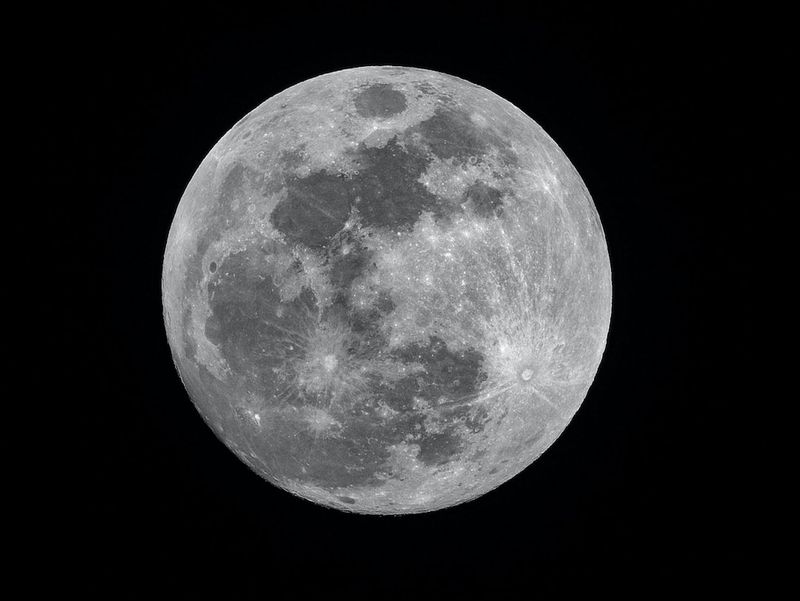- Mystical Guide to the 2023 Full Moon Calendar
- Editorial: The Eternal Allure of Full Moons
- Advice: Embrace the Enchanting Rhythm of Full Moons
- You might want to read !
Mystical Guide to the 2023 Full Moon Calendar
The Fascination of Full Moons
Throughout history, Full Moons have captivated human hearts and minds, inspiring countless myths, tales, and traditions. These monthly celestial events are not only visually stunning but also carry profound symbolic and cultural significance. In this mystical guide, we will delve deeper into the types of Full Moons in 2023, explore their meanings, and answer some commonly asked questions about this enthralling lunar phase.
Types and Names of Full Moons in 2023
Full Moons in 2023 have an array of names that reflect cultural, agricultural, and natural observations about the Moon. These names not only allow us to predict seasonal changes but also help us track the passage of time. Here is a list of the Full Moons in 2023 and their traditional names:
- Jan. 6 — Wolf Moon
- Feb. 5 — Snow Moon
- March 7 — Worm Moon
- April 6— Pink Moon
- May 5 — Flower Moon
- June 3 — Strawberry Moon
- Aug. 1 — Sturgeon Moon
- Aug. 30— Sturgeon Moon
- Sept. 29 — Corn Moon
- Oct. 28 — Hunter’s Moon
- Nov. 27 — Beaver Moon
- Dec. 26 — Cold Moon
The Science Behind Full Moons
A Full Moon occurs when the Sun, Earth, and Moon are in perfect alignment. The Moon is fully illuminated by the Sun’s light, and its phase appears as a complete disc. The angle of sunlight hitting the lunar surface and being reflected back to Earth changes as the Moon orbits around our planet, resulting in the different lunar phases.
A synodic month, which is the time between one Full Moon and the next, lasts about 29.5 days. However, the Moon appears full for approximately three days to our eyes, even though the exact moment of alignment is only a brief interval.
The Cultural Significance of Full Moon Names
The names given to Full Moons reflect the observations and traditions of different cultures. Native American, Colonial American, and North American traditions inspire the names for most months’ Full Moons in 2023. These titles mirror seasonal shifts and natural events, connecting us to the cycles of nature. Here are a few examples:
- Wolf Moon (January): Inspired by the cries of hungry wolves
- Snow Moon (February): A nod to the month’s often heavy snowfall
- Worm Moon (March): Named after the earthworms that signal thawing grounds
- Pink Moon (April): In honor of the blossoming pink wildflowers
- Flower Moon (May): Celebrating the bloom of flowers
- Strawberry Moon (June): Marks the prime strawberry harvest season
In addition to these traditional names, there are a few terms commonly used in public conversations and news:
- Super Moon: A Full Moon that aligns with the lunar perigee, appearing unusually large and luminous
- Blue Moon: The second Full Moon in a month, occurring approximately every 2.7 years
- Harvest Moon: The Full Moon closest to the autumnal equinox, providing extended hours of bright moonlight that benefits farmers
Frequently Asked Questions about Full Moons
What is the difference between a Full Moon and a New Moon?
A Full Moon occurs when the Earth is positioned between the Sun and the Moon, making the entire face of the Moon visible. On the other hand, during a New Moon, the Moon is positioned between the Earth and the Sun, resulting in the Moon’s Earth-facing side being in darkness.
How does the Full Moon influence tides?
The Moon’s gravitational pull causes the Earth’s waters to bulge, creating tides. During Full and New Moons, the alignment of the Sun, Earth, and Moon generates “spring tides.” These tides can be exceptionally high or low due to the combined gravitational influences of the Sun and Moon.
Do Full Moons have an impact on human behavior?
While many stories suggest that Full Moons influence human behavior, causing restlessness or even lunacy, scientific analyses have largely debunked these claims. Yet, the legend persists, fueling our collective fascination with the Moon’s impact on our lives.
Editorial: The Eternal Allure of Full Moons
The enduring allure of Full Moons lies not only in their visual splendor but also in their ability to evoke a sense of wonder, connection, and introspection. These celestial events transcend cultural boundaries, reminding us of our shared humanity and our interconnectedness with the cosmos.
While science provides rational explanations for the mechanics behind Full Moons, their emotional and symbolic significance cannot be measured by scientific instruments alone. Full Moons invite us to reflect on the cyclical nature of life, the passage of time, and the inherent mysteries within the universe.
Whether you are an avid stargazer or an occasional admirer of the night sky, make time to experience the magic of Full Moons. Find a quiet spot under the celestial canopy, let go of your daily concerns, and allow yourself to be mesmerized by the timeless beauty that unfolds overhead.
Advice: Embrace the Enchanting Rhythm of Full Moons
As Full Moons continue to illuminate our nights and ignite our curiosity, seize the opportunity to engage with the natural world and reconnect with your inner self. Here are a few ways to embrace the enchanting rhythm of Full Moons:
- Take Moonlit Walks: Venture out into nature during a Full Moon and experience its soothing and energizing presence. Let the moonlight guide your steps and immerse yourself in the enchantment of the night.
- Create Moon Rituals: Embrace the spirit of ancient tradition by incorporating Full Moon rituals into your life. Whether it’s meditation, journaling, or engaging in a creative practice, these rituals can deepen your connection to the natural cycles.
- Observe Lunar Energy: Pay attention to the energetic shifts that occur during Full Moons. Notice how your emotions, dreams, and intuition may be heightened. Use this awareness to gain insights and clarity in your life.
- Celebrate Nature’s Bounty: Full Moons often coincide with seasonal changes and natural events. Take the time to celebrate and appreciate the natural world around you. Engage in activities that honor the cycles of growth, harvest, and renewal.
By embracing the enchanting rhythm of Full Moons, we can deepen our connection to the cosmos, find solace in the beauty of our world, and nourish our souls with the ancient wisdom that permeates the night sky.
So next time a Full Moon graces the heavens, remember to look up, let the moonlight wash over you, and allow yourself to be transported by the timeless magic that unfolds under its luminous gaze.

<< photo by Mike Petrucci >>
The image is for illustrative purposes only and does not depict the actual situation.
You might want to read !
- A Celestial Spectacle: The Timely Arrival of the Super Blue Moon in 2023
- Super Blue Moon 2023: A Celestial Spectacle Not to Be Missed
- “Why is the strawberry moon named so, and what makes it special?”
- “Exploring the Mystical Origins and Modern Significance of the Strawberry Moon and Other Full Moon Names”
- “Stargazing Spectacle: How to Witness the Mesmerizing Orionid Meteor Shower this Weekend”
- The Astronomical Significance of the Next Supermoon: The Sturgeon Moon Rises
- Your Guide to Celestial Spectacles: Full Moons, Supermoons, Blue Moons, and the Meteor Shower Extravaganza




![The Rise and Fall of College Football Broadcasting: Michigan Wolverines vs. East Carolina Airs on [TV Channel]sports,collegefootball,broadcasting,MichiganWolverines,EastCarolina,TVchannel](https://worldtrendnow.com/wp-content/uploads/FootballBroadcasting-810593-420x345.jpg)